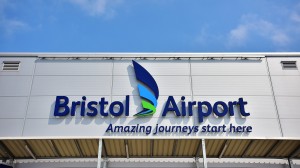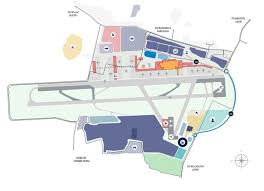Bristol Airport has unveiled a new masterplan to increase its capacity from 12m passengers a year to 15m while adding direct flights to the East Coast of America and the Middle East.
Airport bosses insist the current restriction on passenger numbers – set just two years ago – is too low and can be sustainably increased by 3m a year until around 2036 as demand for air travel continues to rise. 
They say the planned development, including further extending the terminal building, adding more aircraft stands and opening a second on-site hotel, would boost the regional economy and create more jobs for local people.
But it drew immediate flak from the umbrella pressure group formed to fight the current expansion, which branded it “utterly irresponsible” and argued it showed “a complete disregard for the local community and environment.”
The airport, which is owned by Canadian group Ontario Teachers’ Pension Plan, won a drawn-out legal battle against the Bristol Airport Action Network (BAAN) just under two years ago, which enabled its current five-year, £400m expansion to 12m annual passengers to go ahead.
This work includes upgrading the terminal building, parking facilities and public transport links along with two new executive lounges and 38 new or upgraded catering and retail outlets. 
The new masterplan, pictured, which will run until 2040, is now open for a two-month long consultation, which the airport said would give an opportunity for people to help shape its plans.
The airport, which currently offers flights to 115 short-haul destinations following a big increase over recent years, also said the expansion under the new masterplan could allow it to re-introduce long-haul links to the American East Coast and the Middle East.
The airport has not had direct scheduled flights to the US since Continental Airlines ended its New York service in 2010 after operating it for five years.
It has never had direct, scheduled services to the Middle East – although a number of holiday firms operate charter flights to tourist destinations in the region.
The airport claims providing new destinations would reduce the 10m journeys a year currently made to London airports by passengers from the South West and South Wales. 
It added that it remains committed to achieving net zero on its operations by 2030 while working in partnership with airlines to cut indirect emissions and support the development of zero emissions flight.
Bristol Airport chief executive officer Dave Lees, pictured, said: “We constantly look at trends in air travel and we’ve been pleasantly surprised that people want to continue to travel by air.
“We’ve seen since the pandemic a real resurgence in terms of people wanting to connect with friends and family across Europe as well as across the world and that will inform our plans as we go forward over the coming years.
“The masterplan will look at what further development might be required to meet this growing demand for air travel and we’d welcome input from people to help shape our plans.”
He said the current £400m investment was aimed at improving the passenger experience while also reducing the airport’s carbon emissions.
“We’re continuously investing in improvements to meet current demand, with our new £64m public transport interchange currently under construction,” he added.
“Work is also ongoing to decarbonise operations at the airport on projects removing gas from our site, to be replaced with heat pumps.
“We recognise there will be concerns about carbon emissions resulting from airport growth and the implications for climate change.
“So we are bringing forward proposals for what we consider to be responsible growth, growth that is both within the current UK carbon budgets required to meet net zero for all emissions by 2050, and with measures to achieve net zero airport operations by 2030.”
The increase in passengers from 12m passengers a year to 15m will increase annual aircraft movements from 85,990 to 100,000 in the longer term to meet demand for air travel.
The airport said that on a busy day in peak period this would result in 35 additional aircraft movements.
While night flying restrictions would remain, the airport is proposing to increase night flights by 1,000 – on average, four a night in the peak period.
The airport officially opened in 1957 as Bristol (Lulsgate) and handled 33,000 passengers in its first year.
On its busiest day this year around 40,000 people passed through the terminal over a 24-hour period.
The consultation runs until 31 January 2025. To find out more and give feedback, go to www.bristolairport.co.uk/future-plans






























